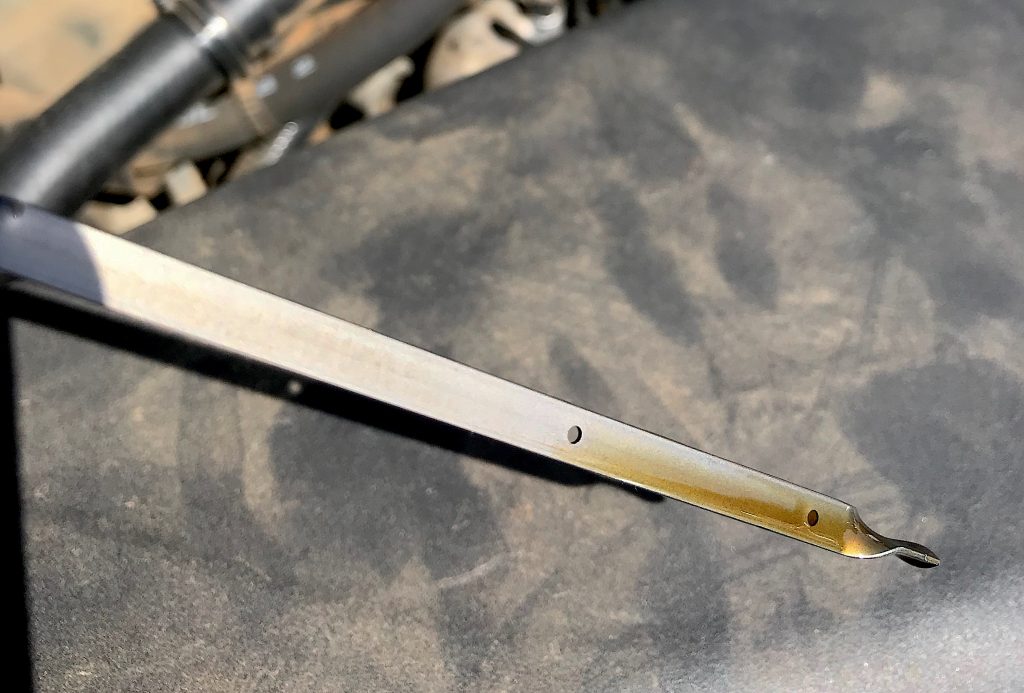Now that we know how crucial it is to check tires and wiper blades, I feel it’s equally important to talk about checking the three most important fluids in your car. Every car on the road, including electric vehicles, use fluids for matters of safety and basic functionality. With this piece, I’ll provide a description these three fluids, as well as when and how to check them.
Motor Oil:
A car’s engine uses the oil to lubricate a varying number of metal parts. It’s arguably the most important fluid in your car because without it, the engine would not be able to function. Over time (about three months or 3,000 to 5,000 miles), the motor oil loses viscosity, which explains why it’s suggested you change your oil within a certain time frame.
However, it’s different for every car, so it’s important to check your owner’s manual (or do some research should you not have one) for the appropriate oil change intervals. For example, a modern BMW typically needs an oil change every 10,000 miles, whereas a Honda Civic from the 90’s needs one every 3,000.
It’s never a bad thing to change the oil sooner than suggested, in fact, in some circumstances it’s encouraged – but it’s not wise for any car (modern or otherwise) to go past the suggested mileage. You can check your motor oil level by looking for the dipstick with the universal symbol for motor oil. Some makes and models don’t have the symbol on the dipstick, but rather simply say ‘motor oil’ on the designated dipstick.

On the dipstick (which is almost always yellow, but each brand is different), there are typically two marked areas to indicate the current level of fluid. Usually, this is in the form of dots or lines across the dipstick.
The highest mark suggests that your oil level is where it should be. The lowest line illustrates the engine being a quart low. It’s okay if the level is in between the high and the low, but it should be taken as a cautionary nudge to add oil soon. Anything below the low line shows your engine is missing more than a quart of oil and oil should be added as soon as possible. You don’t ever want to be more than a quart low on oil or you risk damaging your engine.
When checking the level, bring something to clean the dipstick off first, as the first reading isn’t an accurate one. After wiping it off, put the dipstick back in and pull it back out again to read the level. Depending on where the level is should prompt the appropriate reaction.
Transmission Fluid:
Automatic transmission fluid (ATF) acts as coolant for the gears, protects the gears from wear and creates the ability for the gears to rotate as needed. Without it, the transmission can’t sustain the force needed to move the car. So, if the fluid is excessively low, the car will not move.
However, checking the transmission fluid takes a little more effort to check than engine oil. For example, some manufacturers require the engine be running and warm, and in park or in neutral. Some say the transmission can be cold. So, before checking the level, make sure to consult the owner’s manual to find out the proper procedure, since there are some cars that require special tools to check.
That aside, you can still get a rough idea on where your fluid is at by checking the dipstick (just like checking engine oil). Transmission fluid dipsticks are usually, but not always, on the opposite side of the oil dipstick. The fluid level marks and suggestions are the same as engine oil.
To find out where exactly your transmission dipstick is, be sure to check your owner’s manual. If not, there are a plethora of online resources available to access that information.
Coolant:
While the engine is running, it slowly increases in temperature. When the engine reaches an optimal temperature, coolant begins to flow throughout the system to keep the engine from overheating. Coolant, also called antifreeze, does just that – keeps the fluid in your radiator from freezing.
Without the ability to regulate the engine’s temperature, there comes a huge risk of overheating. And if your engine overheats, the damages aren’t always reparable. If they are, it’s never a cheap fix.
Therefore, it’s important to make sure there is coolant in your system at all times.With most cooling systems, instead of a dipstick, there are markings on the coolant reservoir itself. Normally, coolant reservoirs are clearly labeled and near the radiator, but not always.
To make it easy, there are also usually different labels on where the coolant is supposed to be depending on whether your engine is hot or cold when you’re checking the level. As a rule of thumb, when it’s hot, you want it to be at the upper line.
Note: Make sure you’re checking the level in the cooling reservoir and not the windshield washer fluid reservoir. Windshield washer fluid reservoirs will always either say “windshield washer fluid only,” or will have the windshield washer fluid reservoir symbol on them. While you’re at it, though, it would be smart to check the level in that as well.
Universally, cooling systems in cars take 50 percent antifreeze and 50 percent distilled water. Thankfully, if your car needs more coolant, most auto parts stores carry a prediluted mixture of the two (called a 50/50 mix) for purchase.
Each manufacturer uses a different and sometimes very specific type of coolant, so before purchasing, check your manual or ask your local auto parts store to find out which kind you need.
WARNING:
It’s a matter of safety that you do not remove the radiator cap when the engine is hot. If the cap is removed while the engine is hot, the coolant will boil over and “geyser” out of the radiator, sometimes resulting in serious burning to the face and/or body.








Nice read, thank you for your time and saving someone the headache of a fluid issue down the road.
Thanks for the comment, Mike! I wholeheartedly appreciate you taking the time to read my piece :)